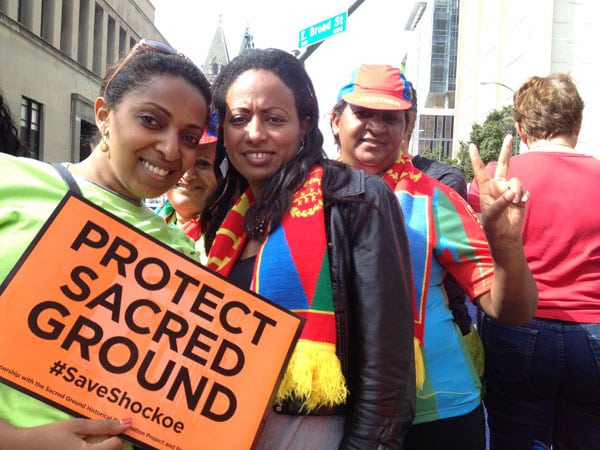
August 8, 2018; Fast Company
One year ago, the white supremacist violence in Charlottesville, Virginia, rocked the nation. It also spurred a national conversation regarding monument preservation and the need to include the contributions of Blacks in the nation’s historical narrative. Since then, some communities have taken ownership in preserving Black history, including the completion of a successful grassroots fundraising campaign to build a statue in honor of Ida B. Wells in Chicago, the recent opening of the National Memorial of Justice and Peace in Montgomery, and the construction of a Octavius Catto statue in Philadelphia.
The groundswell of support for preservation at the grassroots level has come with some philanthropic backing. As previously reported by NPQ, the National Trust for Historic Preservation’s African American Cultural Heritage Action Fund (the Action Fund), a $25-million initiative committed to preserving historic places in the nation’s Black community, grew out of the events in Charlottesville. Three foundations—the Ford Foundation, the Open Society Foundations, and the JPB Foundation—are leading contributors, with a number of other organizations contributing smaller sums.
Having launched last fall, the fund recently announced its inaugural class of recipients, awarding $1.1 million in grants to 16 historical sites in the areas of capacity building, project planning, capital, programming, and interpretation. Among these sites are the childhood home of award-winning playwright August Wilson, the first African American arts museum in the country, and several sites in Birmingham, Alabama, critical to the civil rights movement.
Sign up for our free newsletters
Subscribe to NPQ's newsletters to have our top stories delivered directly to your inbox.
By signing up, you agree to our privacy policy and terms of use, and to receive messages from NPQ and our partners.
The fund will also support new preservation research in historically Black neighborhoods, staff positions at historic Black sites, and career pathways programs. Currently, through partnerships with historically black colleges and universities (HBCUs), the National Trust is working to increase the pipeline of marginalized groups in historical preservation. In July, the organization launched a pilot program called HOPE (Hands-On Preservation Experience) Crew, a national initiative connecting Black youth to career paths in preservation. The initial group consists of architecture students attending Morgan State University. With training from the National Park Service, the crew will work to rehabilitate the nation’s oldest museum building, the Peale Center for Baltimore History and Architecture. The museum was recently repurposed as a cultural center with a mission to “help people see Baltimore in a new light by enabling its creators and culture-keepers to produce and share new and more inclusive narratives of the City, its places, and the diverse people who have made Baltimore what it is today.”
As the first and largest initiative of its kind, the organization is pulling out all the stops to ensure its success. Similar to the Diversifying Art Museum Leadership Initiative (which is also backed by the Ford Foundation), the National Trust recognizes structural barriers need to be addressed in order to diversify the field of historic preservation. The funding of youth programs in historic Black neighborhoods, strategic partnerships with HBCUs, appointing famous celebrity advocates such as Ava DuVernay, Phylicia Rashad, and Dr. Henry Louis Gates to its Advisory Council, in addition to announcing awardees at the annual Essence Festival, show that the fund is leveraging cultural knowledge to build greater awareness and support of historic places that are of particular interest to Blacks.
The creation of the Action Fund is part of a larger effort by the National Trust to increase diversity in the field, a goal that the Trust has supported through scholarships and related programming since 1992. As the Trust continues to build out the Action Fund, it will be interesting to see how the initiative will approach closing the gap between professional historic preservationists and community members. While the Fund is focusing on increasing racial equity among historic preservationists, the importance of community engagement cannot be overstated. Typically, efforts led by organizations are managed in a “top-down” fashion, in which community members must adhere to guidelines set forth by the funder. Concerted effort to make equity and stakeholder involvement top priorities can lead to more diverse historical narratives that the country is eager to hear.
Having received 830 proposals totaling approximately $91 million in support shows the demand and interest for such causes is present. According to president and CEO Stephanie Meeks, she “hopes this inaugural round of grants will both fill a critical funding gap for preservation of African American sites and serve as a motivator for others who are interested in saving diverse places that expand our national identity.” Hopefully, the Action Fund will be a step in that direction.—Chelsea Dennis











